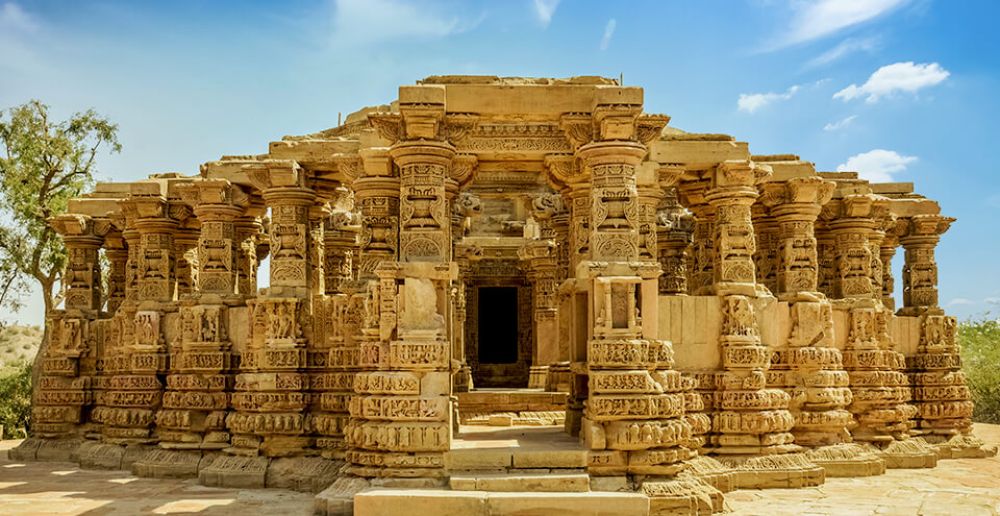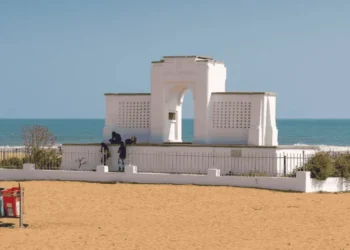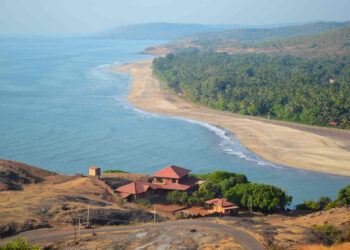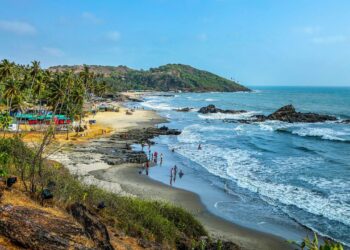Deep in the Thar Desert, near Hathma village about 35 kilometers from Barmer city in Rajasthan, the Kiradu Temples stand as five weathered Hindu shrines, known for their fine stone carvings and haunting local tales. Called the “Khajuraho of Rajasthan” for their detailed sculptures, these temples, mostly built for Lord Shiva and Vishnu, carry a history from the 11th to 12th centuries. Though crumbling, they draw travelers and history enthusiasts to their lonely desert spot.
History of Kiradu Temples
The Kiradu Temples, once part of a bustling town called Kiradkot, were built around the 11th to 12th centuries by the Parmar dynasty, who worked under the Chalukya rulers of Gujarat. Stone writings on the temple walls from 1153 to 1178 CE mention Chalukya kings like Kumar Pal and Bhima II. One from 1178 CE tells of fixing the temples after an attack by Turushka invaders, likely the Ghurids led by Muhammad of Ghor, who were beaten back by the Chalukyas. Some experts, like Percy Brown, date the main Someshvara Temple to the 11th century, while others, like George Michell, think the Vishnu Temple might be from the early 10th century. Wars, neglect, and the desert’s harsh sun left them in ruins, but the Archaeological Survey of India (ASI) has been working to save what remains.
Stories Behind the Temples
The Kiradu Temples are steeped in interesting tales. One big story is about a curse. Hundreds of years ago, a sage came to Kiradu and left his disciples with the villagers while he traveled. Only a potter’s wife fed and cared for them while the rest ignored them. Angry, the sage cursed the entire village, turning everyone to stone except the woman. He told her to run and not look back, but she turned around and became a stone statue too. Locals say this curse still lingers, warning that anyone staying after sunset turns to stone. That’s why no one hangs around at night, giving the place a ghostly feel.
Another tale speaks of Kiradkot’s golden days under King Someshwar of the Kirad clan in the 12th century. The town was a busy stop on desert trade paths until invaders wrecked it, leaving the temples behind. These stories, shared by villagers, mix truth and legend, making Kiradu a place that feels half-forgotten.
Religious Significance of the Temples
The Kiradu Temples were once places to pray to Lord Shiva and Vishnu, but no worship happens now because they’re in ruins. The Someshvara Temple, the biggest and best-kept, is for Shiva, with carvings of his symbols on doorways and walls. Three smaller Shiva temples and one Vishnu temple make up the rest, their sculptures showing scenes from the Ramayana, Mahabharata, and old village life. Though not a pilgrimage spot anymore, the temples are valued for their history and art.
Architecture of the Temples
The Kiradu Temples are built in Maru-Gurjara style, with sandstone carvings so sharp they’re compared to Khajuraho’s. The Someshvara Temple, closest to the road, is the most whole, with sculptures of elephants, fighters, and dancers on its walls and pillars. Its spire is gone, and the hall’s roof is mostly lost, but what’s left shows its old glory. The Vishnu Temple, farther off, has just its sanctum and carved pillars, with scenes of battles and palace life. The three smaller Shiva temples are falling apart, with only sanctuaries standing, but their carvings still shine.
Some pillars have love-themed carvings, earning the “Khajuraho of Rajasthan” name, alongside images of Bhishma on his arrow bed and holy rituals. The Vishnu Temple has hints of older Gupta and Gurjara-Pratihara styles, while the Someshvara Temple shows Solanki skill at its best. A nearby stepwell adds to the site’s old charm. The desert’s sun and wind have worn them down, but the carvings still tell tales.
Visiting Information for Kiradu Temples
How to Get There
The temples are 35–43 km from Barmer city, near Hathma village, and 157 km from Jaisalmer.
By Air: Jaisalmer Airport, 200 km away, is the closest. Taxis to Kiradu take 3–4 hours.
By Train: Barmer Railway Station, 35 km away, links to Jodhpur and Jaisalmer. Taxis or autos to Kiradu take about 1 hour.
By Road: From Barmer, a 30–40 km drive on good roads (except the last 500 meters, which are rough) takes 45 minutes. No buses go to Kiradu; hire a taxi or auto (around Rs. 1000 for a Barmer tour).
Temple Hours
The site is open daily, usually from sunrise to 5:00 PM, looked after by Rajasthan’s ASI. Hours might change; ask at Barmer hotels or local tourism offices.
Entry Fees
Entry costs Rs. 50 for Indians, Rs. 200 for foreigners, and Rs. 5 for students with ID. Villagers collect fees, sometimes without receipts, and it may not be official. Using a DSLR camera can cost Rs. 5,000 per ASI rules, but regular photographers might talk it down.
Best Time to Go
October to March brings cool weather (10–25°C), good for walking around. Summers (April–June) hit 51°C, so go early if you must. Monsoons (July–September) bring little rain but can make roads messy. Leave before sunset for safety and to respect local stories.
Rules for Visitors
Wear proper clothes: men need shirts and trousers; women need sarees or churidar with a dupatta. Skip casual stuff.
Wear sturdy shoes for rocky ground.
Bring water and sunscreen; no shops or food nearby.
Don’t climb ruins or touch carvings to keep them safe.
Photography, especially with DSLRs, may need permission and fees.
No guides are around, so read up or figure out carvings yourself.
Get out before dusk due to local tales and no lights.
Nearby Attractions
Shri Nakoda Jain Temple: 60 km away, a peaceful Jain prayer spot.
Mahabar Sand Dunes: 50 km from Barmer, with desert sights.
Barmer Fort & Garh Temple: In Barmer city, a 1552 CE fort.
Pachpadra Lake: 70 km away, known for its salty water.
Conclusion
The Kiradu Temples in Barmer are a rare gem, mixing old artistry with desert mystery. Though beaten by time, their pillars and sculptures pull you in. Visiting these lonesome ruins feels like stepping into a lost world, leaving you with a sense of awe and wonder.











